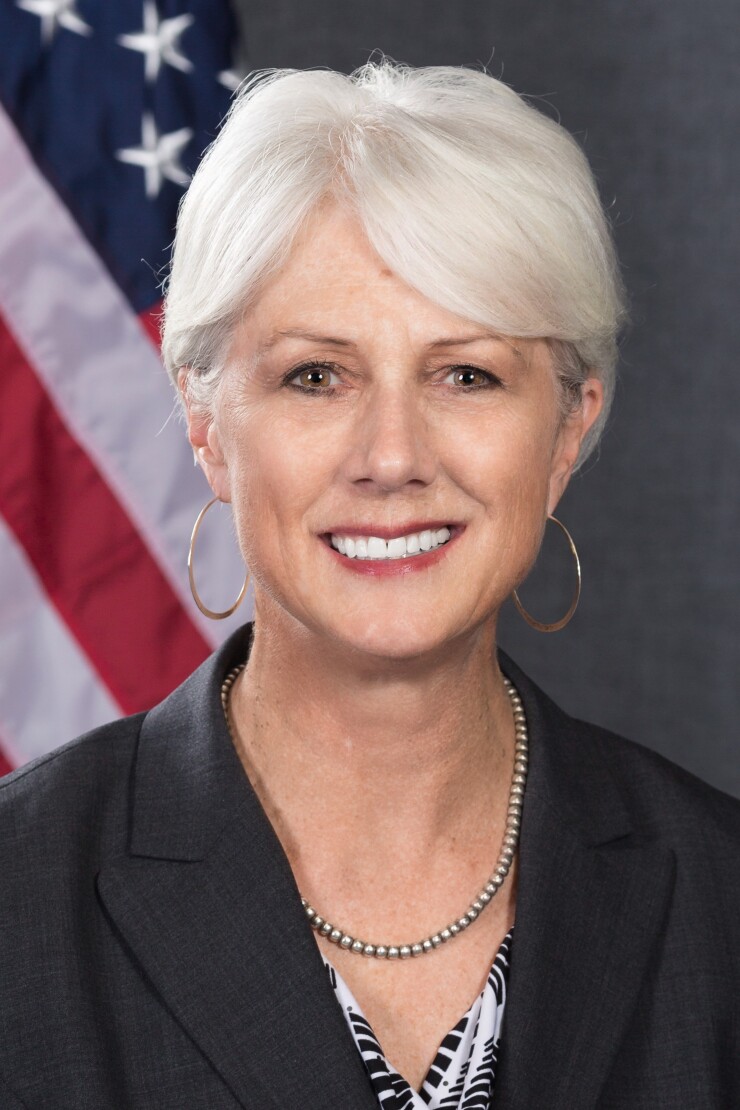Ann Marie Mehlum has been involved in small-business lending her entire career, and after a six-month hiatus, she’s back at it.
After serving nearly three years as an associate administrator at the Small Business Administration and a decade before that as a community bank CEO, Mehlum said she was enjoying what she described as “a little break” from the workaday grind. That respite came to an end last week when SmartBiz Loans announced it had given her a seat on its board.

SmartBiz operates a technology platform – company officials call it an “SBA marketplace” – that links prospective borrowers with SBA lenders. Mehlum, who helped found the $292 million-asset Summit Bank in Eugene, Ore. before joining SBA in September 2013, does not have a technology background. She said she hopes to play a role in helping the eight-year-old SmartBiz add to its bullpen of bank partners.
“I believe my experience at the SBA will certainly help,” Mehlum said in a recent interview. “I’m thinking also that having been a lender and a banker all my life, I can also provide some help in the connection between SmartBiz and lenders.”
CEO Evan Singer predicted her impact on the business would be “exponential.”
Then there is the issue of small-dollar business loans. Mehlum would like to see banks make more of them, though she acknowledges it is an uphill struggle.
“What I’m so happy about with SmartBiz is they’ve really made a mark with loans under $350,000 that are tougher and tougher to find at reasonable rates these days,” Mehlum said. “Small businesses can go online and probably find a $25,000 loan and pay an outrageous [annual percentage rate]. It might be just the loan that sinks their business because of the way it’s priced.”
For the 2016 fiscal year, which ended Sept. 30, SmartBiz ranked as the No. 5 provider of SBA loans less than $350,000.
Mehlum’s small-loan advocacy comes as no surprise. It was during her tenure as assistant administrator for the SBA’s office of capital access that the agency implemented a fee waiver for loans of $150,000 or less.
However, that incentive had a limited impact on the popular 7(a) loan-guarantee program. Between 2013 and 2016, the average size of a 7(a) loan dropped just 2% to $377,000.
Overall lending volume in the 7(a) and 504 programs grew 25% during Mehlum’s tenure, totaling $28.9 billion during the government’s 2016 fiscal year.
“Our banking system can’t do $50,000 or $100,000 loans the way I learned how to do them 25 or 30 years ago,” said Mehlum, who worked for banks in Oregon and California, including Wells Fargo, before helping found Summit in 2003. “It’s just not feasible anymore. You just can’t sit down and spend three days talking to a small business about a $25,000 loan. The bank can’t afford that.”
Mehlum is hoping fintech firms like SmartBiz can act as a game-changer.
“SmartBiz is doing exactly what needs to be done, which is to incorporate technology and new ways of thinking and new ways of doing business so that small businesses can get reasonable financing,” she said.
The SBA has gone a long way to automate and streamline its processes to make them more user-friendly for borrowers and lenders, but its progress cannot match the work being done in the private sector, according to Mehlum.
“We did manage streamlining, and we did manage some automation,” she said. “It’s a federal agency, and there still is much more than can be done.”





